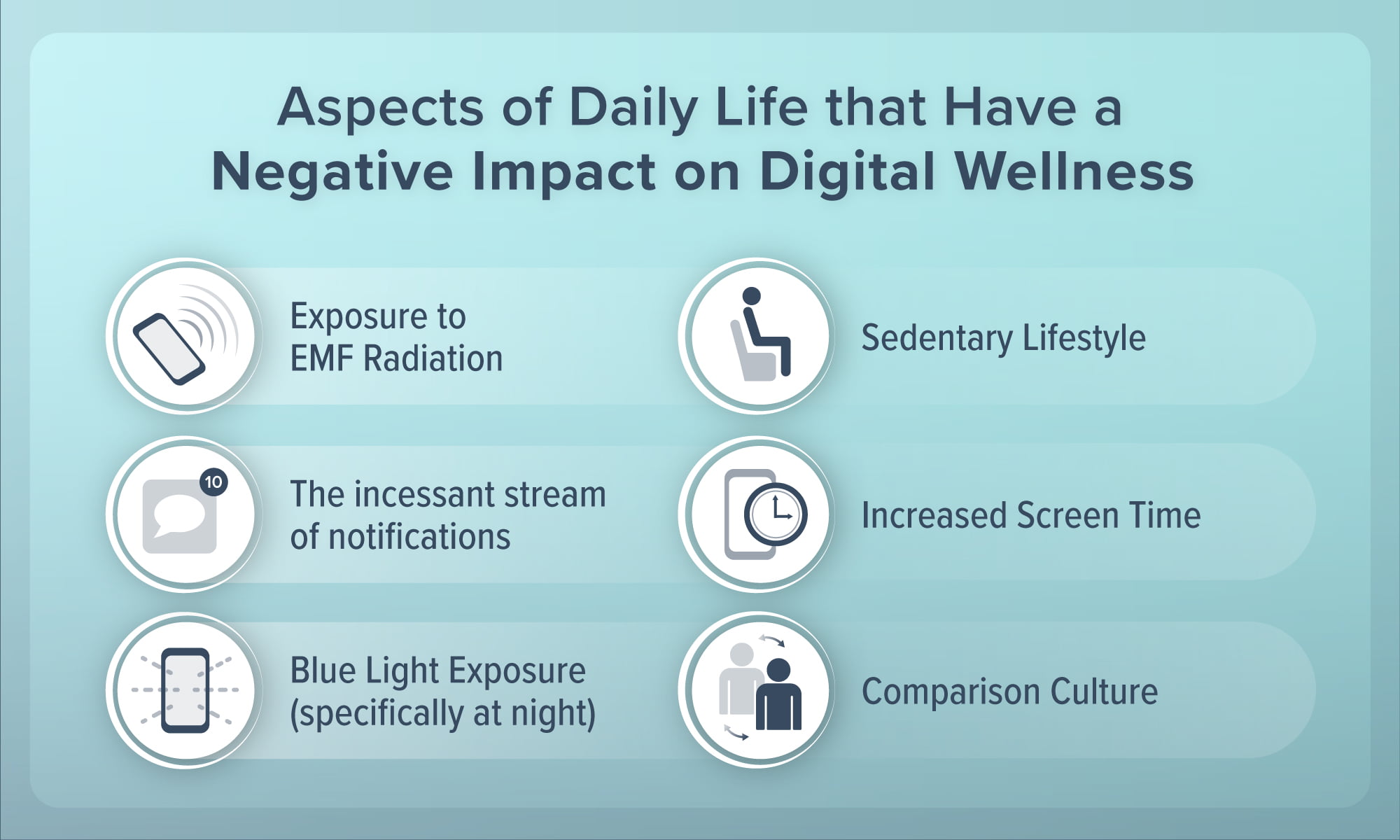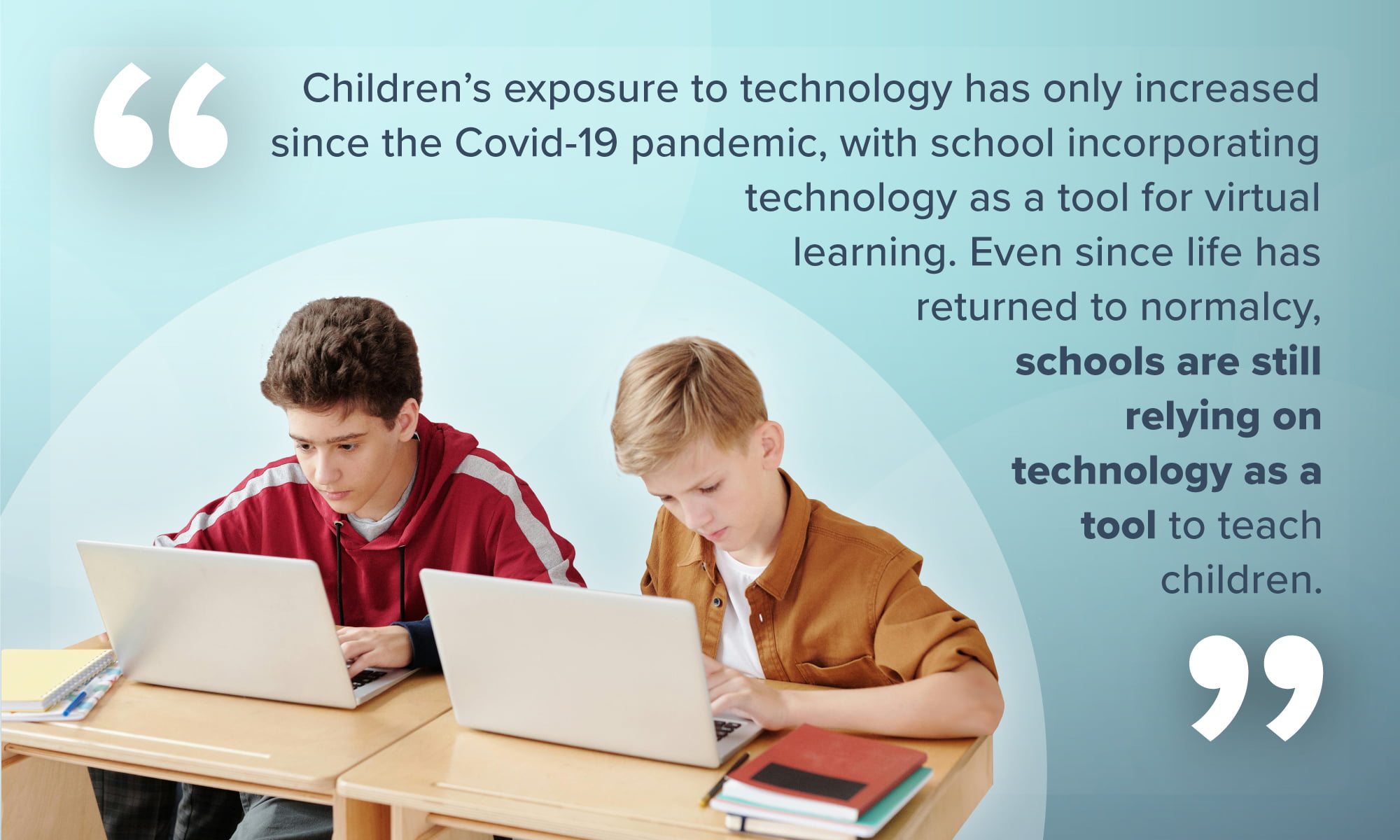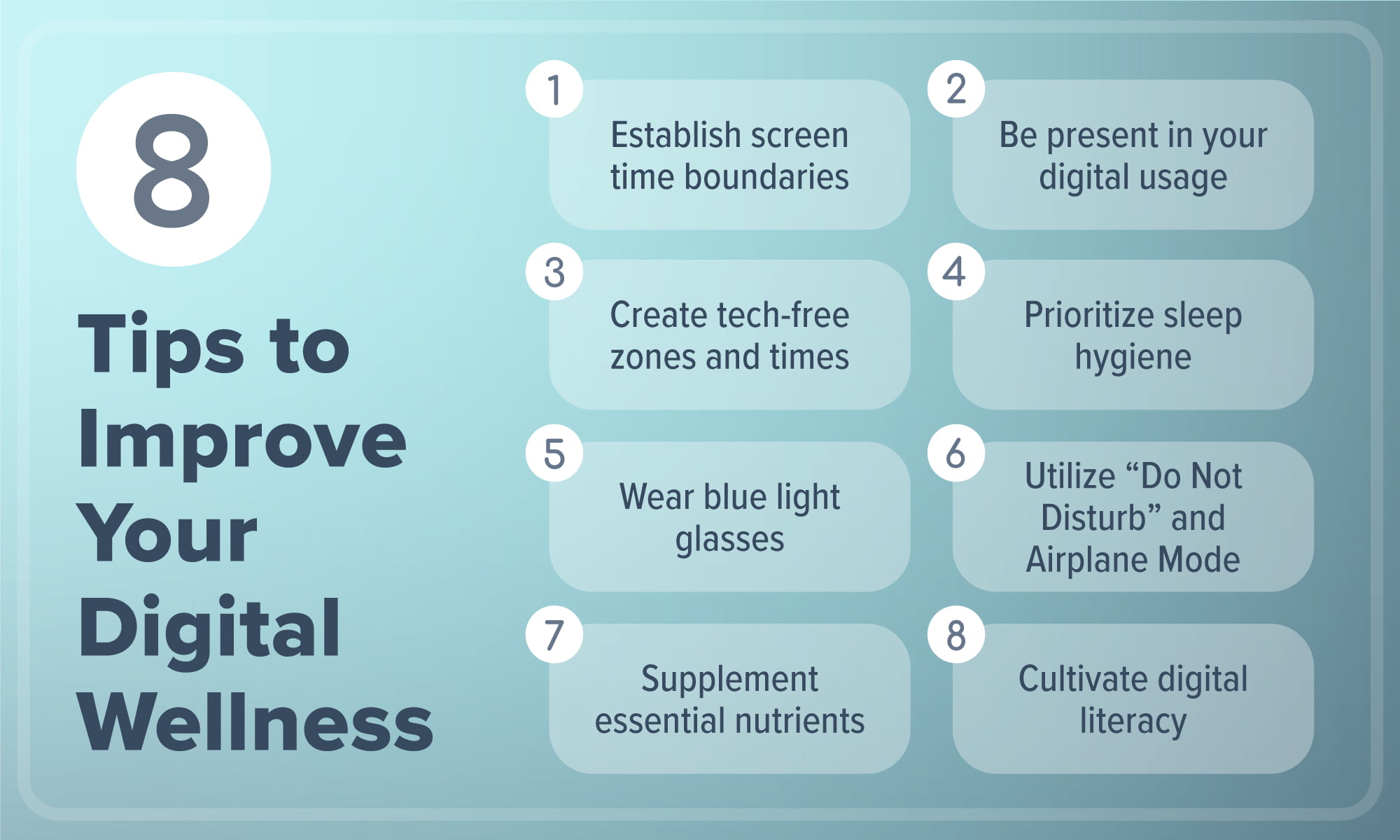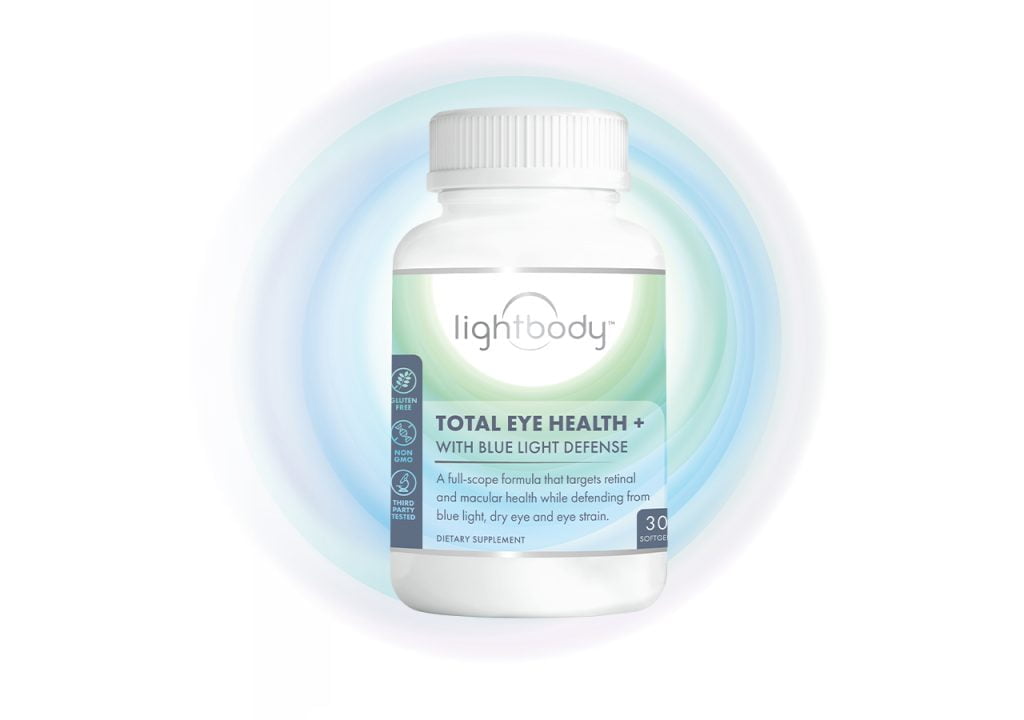Take a second to think about your daily life: you wake up to an alarm on your smartphone, which you pick up to turn off leading to 10 minutes checking your updated social feeds. After getting ready, maybe with a television on in the background, you head in to work. While on your commute, you scroll through your news apps to catch up on global politics. At work, you spend the next 8 hours looking at your dual monitor setup. 5 o’clock rolls around and it’s time to head home. You’ll relax in the evening by turning on Netflix on the TV, playing Candy Crush on your iPad, and occasionally checking Instagram on your phone.
Needless to say, technology has infiltrated all aspects of modern life – you’re even reading this blog on a device.
The average American spends 7 hours and 4 minutes per looking at screens. However, based on that play-by-play example, we may argue that number is higher.
In an era dominated by technology, where screens are ubiquitous, it’s necessary to address the challenges and issues that arise from excessive digital use. The pervasive nature of digital interactions has brought about a host of concerns, encompassing physical and mental health, and really just overall well-being.
As we navigate this modern digital landscape, many individuals find themselves grappling with stress, burnout, and an array of other problems stemming from unhealthy relationships with technology.
The relentless barrage of notifications, the constant pressure to stay connected, and the unending scroll through social media feeds have become synonymous with modern living. These challenges underscore the urgent need for a conscious and deliberate approach to our digital lives.
What you’ll find in this article?
- Navigating the digital landscape: Challenges and solutions
- Definition of digital wellness
- Why is digital wellbeing important in your daily lives?
- Who is at risk?
- The Elusive Work-Life Balance
- Examples on How to Practice Digital Wellness
Navigating the digital landscape: Challenges and solutions
So how do you develop and maintain a healthy relationship with your beloved devices? This is where the concept of digital wellness takes center stage. It offers a holistic framework to address and mitigate the negative impacts of our increasingly digitized existence.
In this blog, we will discuss the multifaceted challenges associated with higher tech use, exploring how it affects our health, productivity, and wellbeing. However, it’s not all doom and gloom, and we recognize that technology doesn’t have to be all bad.
While we acknowledge there is a problem with technology, we also are realistic and understand technology is forever integrated into our lives! As such, we will introduce practical solutions and tips to promote digital wellness.
By the end, we hope to have empowered you as the reader to navigate the digital landscape with intentionality, mindfulness, and a renewed focus on your own wellbeing.
Digital wellness definition
What is digital wellness? We define it as the pursuit of a healthy and authentic relationship with technology, that balances a person’s physical and mental health and social well-being. This can be achieved through moderating exposure, intentional engagement, and a healthy and holistic lifestyle.
Sounds great, right? We certainly think so! Digital wellbeing is important as it empowers individuals to maintain a healthy and balanced relationship with tech. It can help mitigate potential adverse effects on mental and physical health in our increasingly digital-centric lives.
Why is digital wellbeing important in your daily lives? Concerns with modern technology usage
The extensive amount of technology into our daily lives brings forth a range of concerns that merit careful consideration. Excessive technology use has been linked to various health issues.
Below, we will detail some specific concerns around the overuse of technology. Being informed is the first step for us to lead healthier lives!

Exposure to EMF radiation
As we immerse ourselves in the conveniences of modern technology, concerns surrounding electromagnetic field (EMF) exposure have emerged as a topic of increasing relevance. EMFs, generated by electronic devices are low-frequency radiation that pose a threat to our health. Devices such as mobile phones, laptops, and wireless routers, all emit EMF radiation.
While scientific consensus on the matter is still evolving, studies have found a correlation between prolonged exposure to EMFs and adverse health effects. There are concerns about increased risk of certain cancers, disrupted sleep patterns, and potential impacts on reproductive health.
Prudent measures such as maintaining a safe distance from devices, minimizing extended use, and opting for wired connections when possible, underscore the importance of considering and mitigating potential risks associated with EMF exposure in the context of our ever-growing reliance on technology.
Increased screen time
Extended screen time is associated with adverse health effects, contributing to concerns such as eye strain, headaches, disrupted sleep patterns due to exposure to blue light, and sedentary lifestyle-related problems.
The pervasive use of social media has been linked to mental challenges, including heightened levels of stress, anxiety, and feelings of social isolation. This impact of increased social media use is especially felt among teenagers, leading to a drastic decrease in mental wellbeing.
Blue light exposure, specifically at night
Blue light emitted by screens impacts our circadian rhythm, the natural sleep-wake cycle of our bodies. The circadian rhythm, an evolutionary cycle of our bodies, is triggered by the sun’s blue light. However, with the excessive amount of screens today, this artificial blue light tricks the brain into thinking it is still day time. Your body might think it’s midday, but in reality it might be 2 a.m. when you’re scrolling TikTok.
When this happens, blue light suppresses the production of melatonin, a hormone that regulates sleep. This potentially disrupts sleep patterns and contributes to difficulties in falling asleep and experiencing restorative rest during nighttime hours, leading to an overall disruption in sleep patterns.
Sedentary lifestyle
Prolonged periods of sitting have been linked to increased risks of obesity, cardiovascular diseases, and musculoskeletal problems. Obesity is further related to other chronic conditions and illness. Life expectancy has increased due to the use of technology in the medical field. But, it has come at the detriment of physical health, with many people living longer with poorer physical function and reduced quality of life.
Beyond the physical implications, a sedentary lifestyle fosters a stagnant mental state, potentially leading to feelings of lethargy and decreased cognitive function.
Impact on mental health
The incessant notifications, social media pressures, and the demand for instant engagement contribute to heightened levels of stress, anxiety, and even feelings of isolation. The comparison culture perpetuated by online platforms can negatively impact self-esteem and mental well-being.
The constant connectivity facilitated by technology also blurs the lines between work and personal life, leading to burnout and heightened stress levels. Mental health problems are often further exacerbated.
Who is at risk?
While everyone is at risk, children are the most vulnerable for quite a few reasons.
They are constantly growing and developing, and any external stimuli can have an impact on their health. In their formative years, kids are particularly vulnerable to the adverse effects of excessive technology usage, and run the risk of developing poor digital wellness practices.

First and foremost is the rise of screen time. The immersive nature of digital devices often leads to extended screen time. Children’s exposure to technology has only increased since the Covid-19 pandemic, with school adopting digital platforms as a tool for virtual learning. Even since life has returned to normalcy, schools are still relying on technology to teach children.
The increase in screen time is due, in part, to the rise of social media. Excessive use of social media platforms can expose children to mean cyberbullying, societal pressures, and a distorted sense of reality. While social media platforms require users to be 13 years old to become users, there are obviously ways to circumvent this verification point, leading to younger children being exposed to the negative repercussions of social media usage.
Physiologically, prolonged exposure to screens can contribute to developmental issues. Constant exposure to stimuli from screens can interfere with the development of attention spans and critical thinking skills. The early introduction to digital interfaces may hinder the acquisition of essential social skills. Without these social skills, this may potentially lead to difficulties in forming meaningful face-to-face connections. Creating habits of a sedentary lifestyle in childhood leads to increase chances of obesity and the issues associated with being overweight.
Recognizing these risks underscores the importance of implementing thoughtful guidelines and teaching digital literacy from an early age. Parents, educators, and caregivers play pivotal roles in creating a balanced digital environment for children.
The Elusive Work-Life Balance
A big question that surrounds digital wellness how do you manage it when many so many people now work from home. Companies are utilizing digital technologies instead of going into offices. From online meetings to Teams messages pinging every couple minutes, the modern workday has drastically changed in recent years. Some surveys indicate that nearly 50% of the American adult population works from home at least once a week.
The boundary between professional responsibilities and personal time has blurred significantly. The constant connectivity facilitated by smartphones and remote work arrangements has made it challenging for individuals to disengage from work. Now, many people are in a perpetual state of availability.
As a result, many employees find themselves grappling with the pressure to be ‘always on,’ responding to emails after work hours, and feeling the need to stay digitally tethered even during leisure time. The consequences of this imbalance extend beyond the professional realm, permeating into personal relationships, mental well-being, and overall life satisfaction.
Navigating the delicate equilibrium between work and personal life requires intentional efforts. Establishing clear boundaries, embracing time management strategies, and fostering open communication with employers and colleagues are crucial steps in reclaiming a semblance of balance.
Examples on How to Practice Digital Wellness
Establishing healthy digital habits leads to healthier and happier lives. The goal is to find a balance with technology, so that it has a positive impact on your life. Below are our 8 tips for it improve digital wellness.

Establish screen time boundaries
Set time limits on apps across various devices. Use digital tools, which are often built-in features, or third-party digital wellbeing apps to track and manage the time spent on smartphones, tablets, and computers. Allocating specific periods for digital engagement helps to reduce the negative consequences of overuse. Try to limit time outside of work using devices to two hours per day or less.
Create tech-free zones and times
Designate certain areas in your home or specific times of the as tech-free zones. This could include meal times, family gatherings, or the first and last hour of your day. Even consider one day a week to be tech free. Disconnecting during these periods helps to emphasize real-world connections and reduces dependency on mobile devices.
To stay safe from EMF radiation, we suggest keeping your WiFi router and other technology out of living spaces.
Wear blue light glasses
Incorporate blue light glasses into your daily routine to reduce eye strain caused by long periods of screen time. These glasses filter out harmful blue light, providing a simple yet effective way to protect your eyes and enhance overall comfort during digital activities.
Supplementation to protect from the inside
We can do so much to protect out bodies externally, so consider how you can use proper nutrition and supplementation to fortify your body from the inside out. Supplementation with nutrients like omega-3 fatty acids, antioxidants, and vitamins has been explored as a potential strategy to support wellness by mitigating the oxidative stress associated with prolonged technology usage.
To learn more, visit our blog on supplements for women.
Be present in your digital usage
Prioritize being present in your digital interactions by minimizing multitasking and focusing on one task at a time. Mindful engagement with technology creates a more intentional and satisfying digital experience, promoting a sense of control and well-being.
Prioritize sleep hygiene
We know that sleep is important. Prioritize sleep hygiene by establishing a digital curfew, reducing screen time at least a two hours before bedtime. This simple adjustment can improve sleep quality by minimizing the disruptive effects of blue light emitted by screens, allowing for a more restful and rejuvenating night’s sleep.
Utilize Do Not Disturb and Airplane mode
Utilize the “Do Not Disturb” feature to reduce interruptions and promote concentration, especially during focused work or quality time with loved ones. To further disconnect, turn on Airplane mode during designated periods too, fostering a mindful and uninterrupted break from the constant stream of notifications – also a good way to decrease EMF exposure!
Increase your digital literacy
Cultivate digital literacy as a fundamental tool for navigating the complexities of the online world. Understanding digital privacy and safety settings, recognizing misinformation, and having the skills to critically evaluate digital content empowers you to make informed choices.
Additionally, the knowledge base around health impacts and technology is constantly evolving, so staying up to date is important to understand how it can affect you.
Frequently Asked Questions about Digital Wellness
Digital wellness refers to the intentional and mindful use of technology to promote overall wellbeing. It involves striking a balance between the benefits and potential drawbacks of technology, fostering healthy habits, and addressing the challenges associated with excessive digital use.
Technology can support digital wellness by incorporating features like screen time tracking, mindfulness apps, and digital health platforms that encourage users to establish and maintain healthy online habits. Additionally, various applications and tools provide resources for mental health, productivity, and overall wellness.
While there isn’t a globally recognized Digital Wellness Day, we encourage you to embrace these practices year round. We want to support you everyday on your journey to digital wellness, raising awareness and encouraging health technology use. It’s about developing health habits so you can lead a healthier and happier life.









